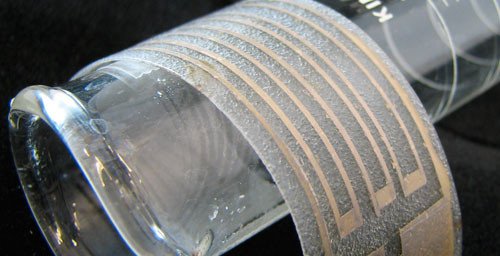Reactive silver ink is airbrushed onto a thin, stretchy plastic film to make a flexible silver electrode. Credit: S. Brett Walker, University of Illinois
CHAMPAIGN, Ill., Jan. 13 (UPI) -- U.S. researchers say a new kind of silver ink could lead to printable low-cost electronic circuits on flexible materials like paper, plastic or fabric.
University of Illinois materials scientists, led by Jennifer Lewis, have developed a particle-free reactive silver ink that holds the promise of creating flexible circuits for antennas, batteries, sensors, solar energy, wearable devices and more, a UI release reported Thursday.
While most conductive inks rely on tiny metal particles suspended in the ink, the new formula is a transparent solution of silver acetate and ammonia in which the silver remains dissolved in the solution until it is printed and the liquid evaporates, yielding conductive features.
"It dries and reacts quickly, which allows us to immediately deposit silver as we print," researcher S. Brett Walker said.
The reactive ink has several advantages over particle-based formulation, Walker said. A batch can be mixed in minutes, as opposed to particle-based inks that take several hours and multiple steps to prepare.
The ink also remains stable and usable for several weeks, he said.
"For printed electronics applications, you need to be able to store the ink for several months because silver is expensive," Walker said. "Since silver particles don't actually form until the ink exits the nozzle and the ammonia evaporates, our ink remains stable for very long periods.
"For fine-scale nozzle printing, that's a rarity."
The ink's low viscosity makes it suitable for inkjet printing, direct ink writing or airbrush spraying over large areas, the researchers said.















